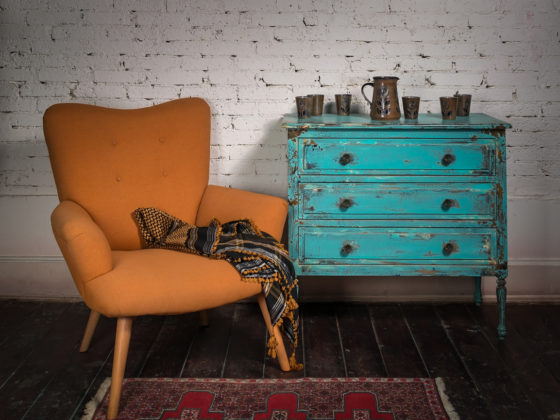
Most antique malls have heaps of glass. It can range from a few pieces in a display case to enough shelves of glassware to daintily serve a small army. If you don’t know what you’re looking at, your eyes can glaze over and you move right on to the next booth.
Stop!
Here’s a quick intro to different types of collectible glassware so you’ll know what you’re looking at.
Collectible glass doesn’t have to sit in a frumpy curio cabinet doing nothing. Instead, choose some retro glasses and use them at your next BBQ! Another choice is an eclectic mix to use for mealtime, party time, or anytime. Buying and using vintage glassware instead of new is a great way to support sustainability, too!
Kinds of Glassware
Knowing the kinds of glassware can give you a leg up on identifying how old it is and how collectible it might be.
- Blown Glass – Blown glass can be hand blown or mold-blown. A lot of blown glass is art glass.
- Pressed Glass – Also known as Pattern Glass and Sandwich Glass, pressed glass has been made since the 1820s and is made by pushing a glob of melted glass into a metal mold. The seam from that molding identifies it as pressed glass. Boston & Sandwich Pressed Glass is perhaps the most famous maker.
- Cut Glass – Cut glass (actually cut, leaded crystal) stands out with the geometric designs that are cut and etched into it. Most popular during the “Brilliant” period of glassmaking (the late 1800s). This comes from the light-catching qualities of the pieces, true cut glass will sparkle and shimmer. Well-known makers include Baccarat, Hawkes, Libbey, and Waterford.
- Depression Glass & Kitchen Glass – Surging in popularity in recent years, Depression and Kitchen glassware is a type of pressed glass. produced in hundreds of styles and colors and sold affordably in dime stores or as a free gift with a purchase. Depression glass is one of the most common kinds of glassware in antique malls. The great part is that with thousands of patterns and styles, there’s something for everyone! Well-known makers include Anchor-Hocking, Hazel-Atlas, Jeannette, and you may have heard of some common types of kitchen glass such as Jadeite, FireKing, or Jennyware.
- Carnival Glass – Another type of pressed glass, Carnival Glass, as you might guess, was a prize at carnivals in the early 1900s and features elaborate designs and a signature, iridescent finish. Noted makers are Fenton, Dugan, and Northwood.
- Milk Glass – Opaque, often white, and often hobnailed, Milk Glass was popular in the late 1800s and again in the 1940s. Common makers include Westmoreland, Fostoria, and Jeannette.
- Retro Glass – A time period rather than a single style, and currently one of the most collectible ranges. Retro glass includes the popular mid-century modern period into the 1970s. Popular makers and lines include Blendo, Culver, Libbey, Pyrex, and many more.
A Note on Crystal
Pros know that the percentage of lead oxide identifies true crystal and you can spot it in several ways:
- Ping! – True crystal will make a musical ringing chime sound when tapped gently, while glass will make a dull thunking noise.
- Prismatic – Holding a piece of crystal up to the light will produce a lovely rainbow prism as the light is refracted through it, unlike glass.
- Weight – Crystal will tend to feel heavier than you expect it to for its size.
Eras of Glassware
- Georgian & Regency – Glassware from the 18th and early 19th century falls into the Georgian and Regency period. Elegant drinking glasses comprises much of Georgian glassware. You’re not likely to run into any in the average antique mall, though.
- Victorian – The Victorian period (1840-1900) produced everything from elaborate pressed and cut glass in the early period to very popular Carnival and Milk Glass in later years. Ruby souvenir glass is one collectible example.
- Depression – Much American glass from the late 1920s to the early 1940s falls into the Depression Glass period, generally covering the period between the World Wars.
- Atomic and Mid-Century – Post-World War II through the 1970s, glassware was defined by the new space-age and modern styles.
Markings
Much earlier glassware often lacks any mark and you’ll have to use other clues to identify it. Later glassware shows a raised or embossed mark on the base put into the glassware during its molding. Art glass pieces may have a written signature or mark. Occasionally, pieces have etched markings or paper labels. To do some research on what those scratches are on the glassware in front of you, peek over at Glass Bottle Works that works with a pretty hefty encyclopedia. You can find it here.
Crystal clear? We hope so! Knowing more about what you find can make browsing an antique store a lot more fun, and might net you some great finds, too! We hope you’ll stop by soon and check out our glassware and other treasures.


